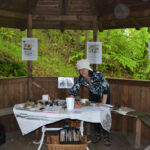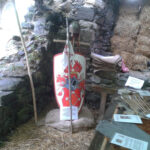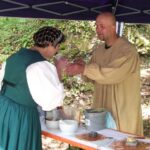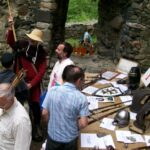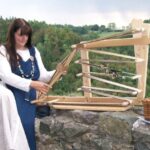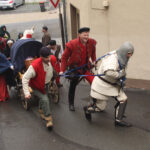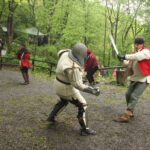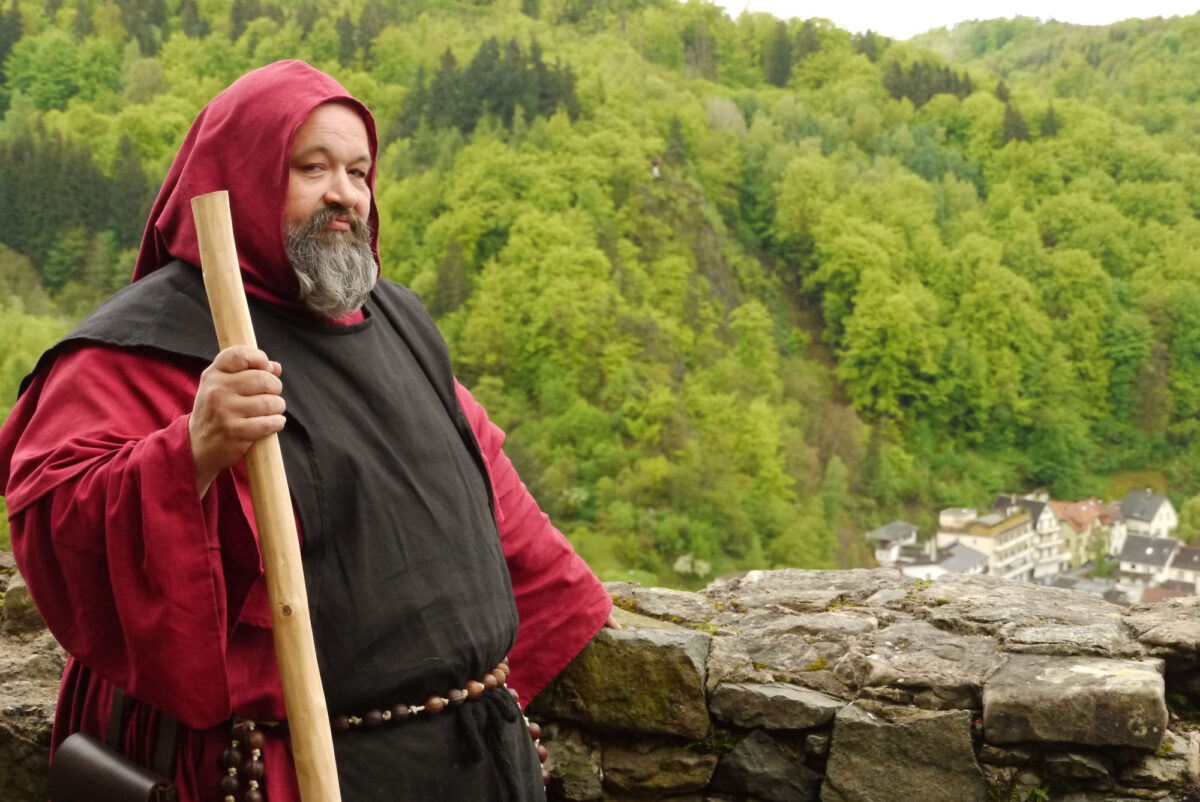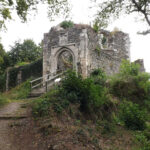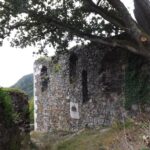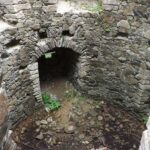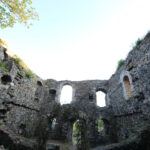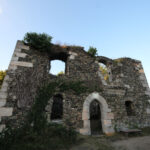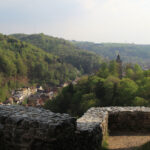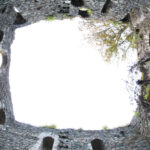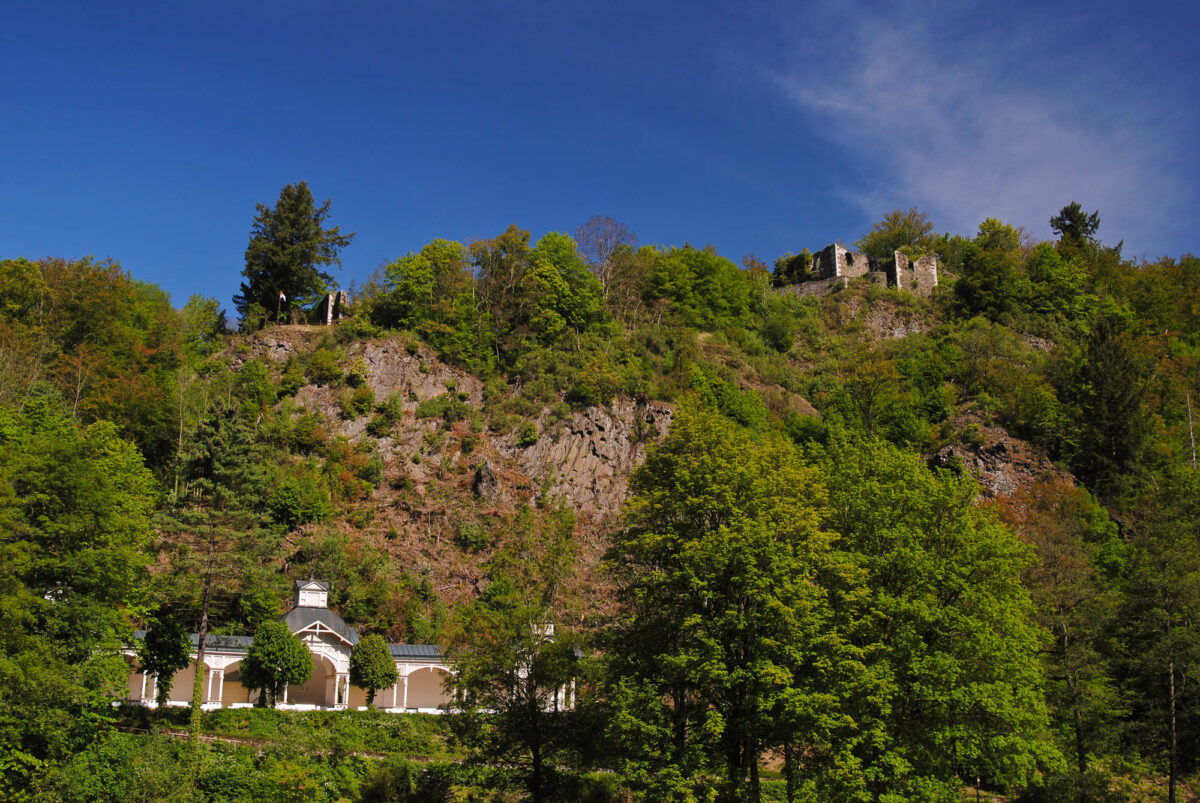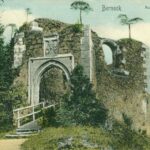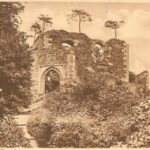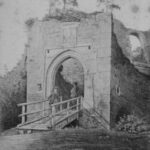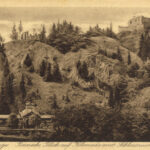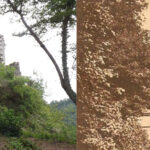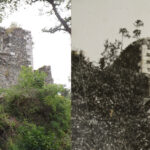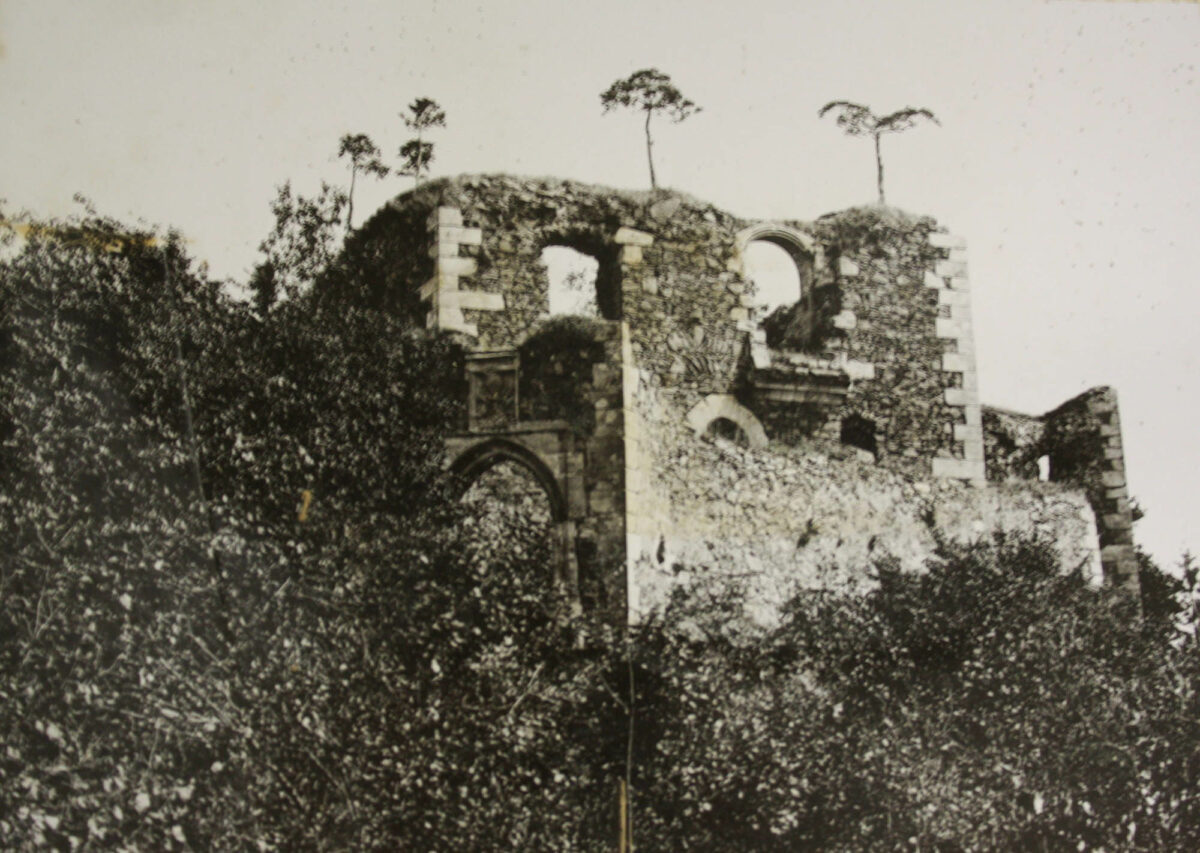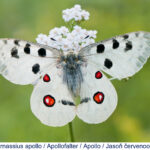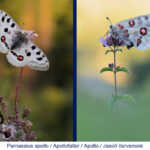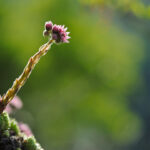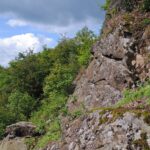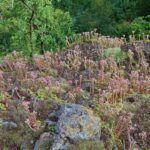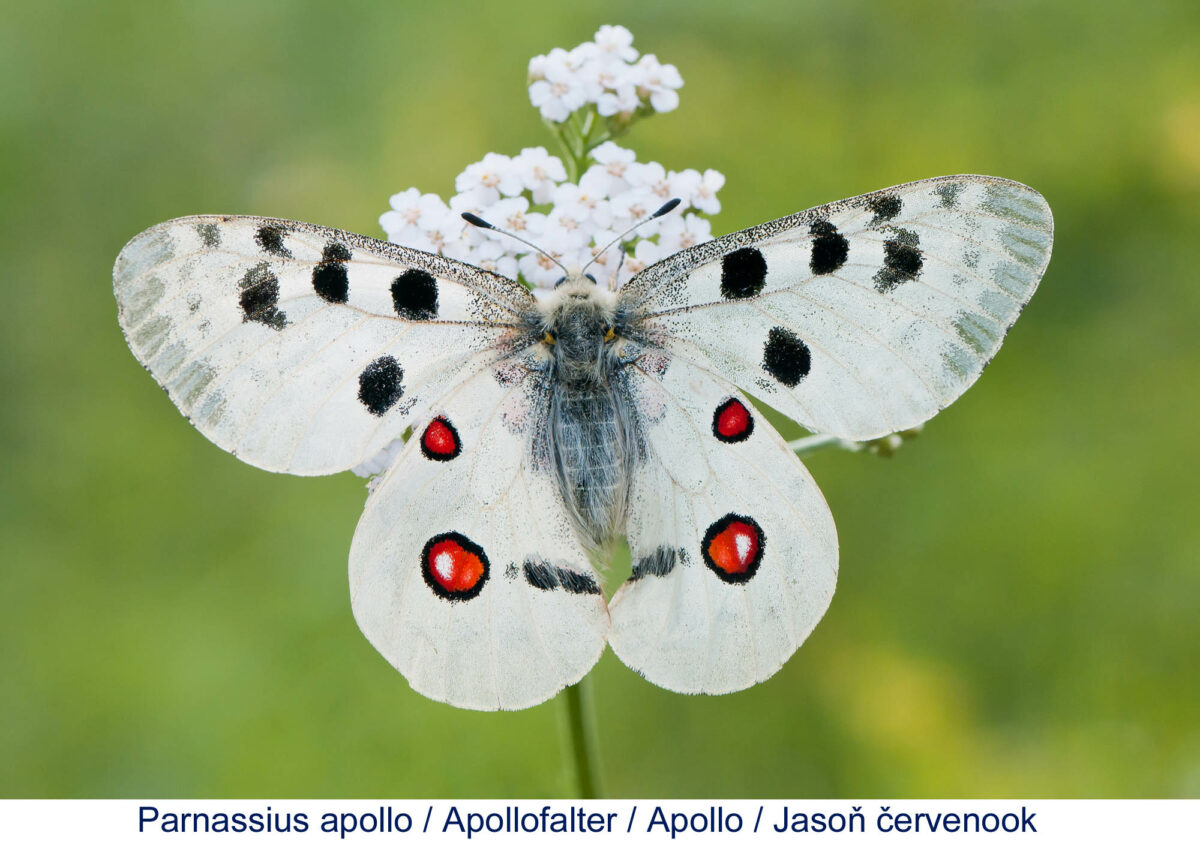Castle Ruins
The two castle ruins and the stony remains of St. Mary’s Chapel are parts of a massive castle landscape with a total of six defensive fortifications along the valley of the Ölschnitz. The earliest fortification dates from the Carolingian or Ottonian period; the last castle, Hohenberneck, was built at the beginning of the modern era. Bad Berneck had a strategic location at various boundaries and at the major international trade route, the Via Imperii. Additionally, erosion and the many natural valleys at the footlands of the Fichtelgebirge created a variety of suitable building sites for the construction of castles.
The annual Castle Festival at the weekend after Ascension Thursday in and around the castle ruins recreates medieval life for thousands of visitors.
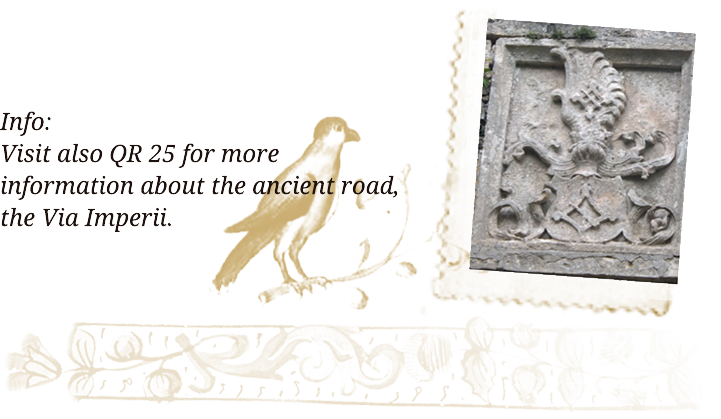
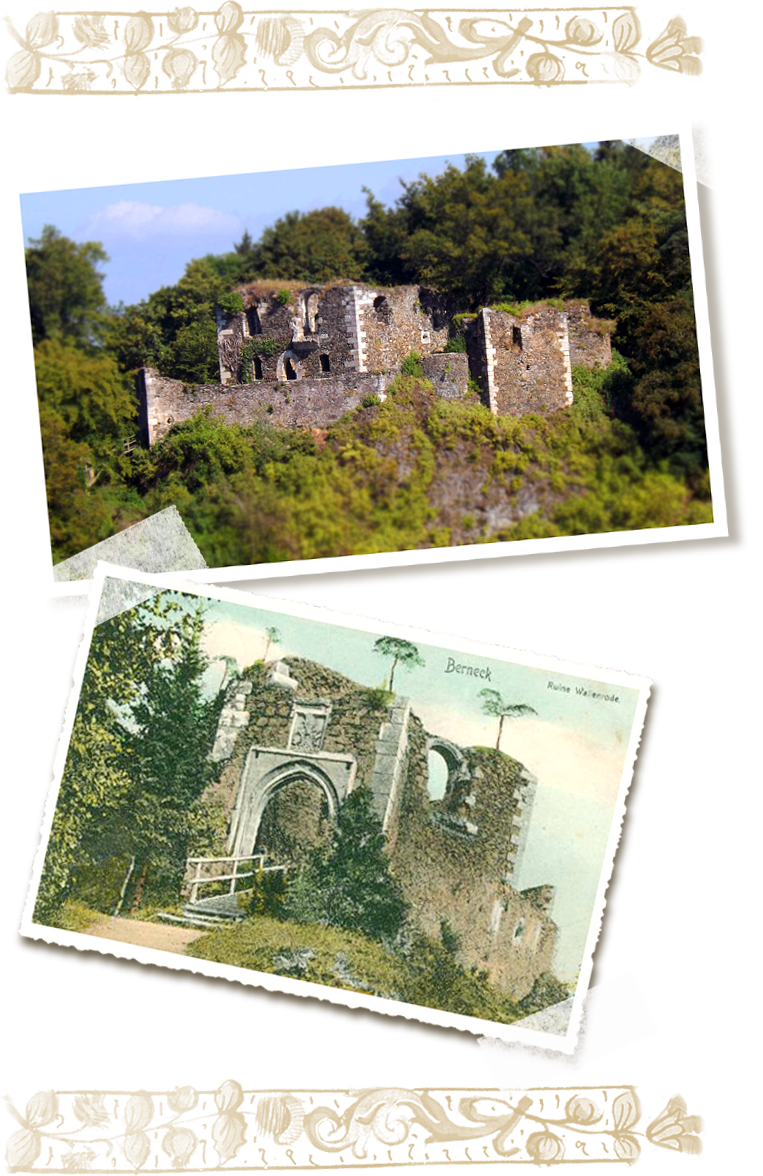

Walk into the Middle Ages
A journey through the construction of the legendary castles:
A total of six fortifications with all the typical features from the period of the early Middle Ages until the beginning of the late Middle Ages are linked through shady trails in the valley and dreamlike, narrow mountain paths. This trail can be walked in just one day, and the castles viewed in the order of their construction. A unique opportunity!
On these paths, you are never far away from Bad Berneck and its many good restaurants.
Local historian Claus Rabsahl describes all six fortifications in the recommended sequence for a tour:
Fortification on the Hohen Warte
The Wallburg on the Hohen Warte showcases the mythical time of the early Middle Ages. Stone buildings were still extremely rare at that time. The nobility lived in the villages. The castles of this time were for larger population groups: for example, as a place of refuge.
Tower castle Alt-Berneck
One of the earliest aristocratic castles in Germany can be found here, on a mountain spur in Ölschnitz valley. The castle tower is dated to the early 11th century. In contrast to the Hohen Warte, this castle was for just one noble family, the Walpoten. Noble castles of this time consisted of a residential tower surrounded by a circular wall.
‘Motte’ in Hermersreuth
While the higher nobility went to the mountain heights, the gentry still lived in the villages. There, they built fortified residences. A beautiful example of this building type is the Motte Castle in Hermersreuth, which originated in the 11th or 12th century. One can still imagine the small, wooden residence in the center of a small village.
Stein Castle Ruins
The first classic castle shows the beautifully situated half ruins of the castle Stein from the middle of the 14th century. The remnants of a towered residence as the central building is featured here too.
Altes Schloss (Old Palace) Castle Ruins
Built in the second quarter of the 13th century, the Old Palace shows the classical form of a Hohenstaufen castle . From about the middle of the 12th century, the residential function was separated from the military function. Instead of a residential tower, now the complex was cominated by a keep. The noble family lived in the palace of the castle. The complex was enclosed by a wall.
Hohenberneck Castle Ruins
This castle shows the more sophisticated housing comforts at the beginning of the modern era. It features more windows than it would have done in the High Middle Ages. This castle was built from 1478 in late Gothic style on the site of a castle from high medieval times, the Walpotenburg (mentioned in 1168).
The Ruins of St. Mary’s Chapel
The foundation stone of the chapel was set in 1480, according to the preserved inscription. The chapel itself is exceptionally well-fortified and so is distinct among the fortified churches.
Burgenfest Gallery
A selection of photographs documenting the medieval reenactment that takes place at the annual Burgenfest. Featuring members from Bad Berneck as well as groups invited from other towns, visitors have the opportunity to experience life in a bygone age.
Bricked in Child
A regional legend about a macabre tradition.
Local saga
told by Heinz Zahn,
English version spoken by Catriona Gallo
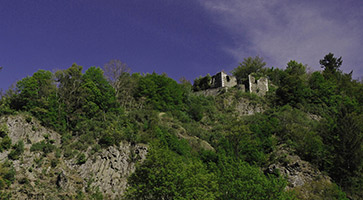
Cosmos
A time-lapse film, constructed from still images, depicting the transition of day to night over the castle.
Photographed and edited by Dominic Day.
New
Current photographs of the castle ruins.
Old
Images of the ruins from the turn of the 19th century, along with now-and-then photographs.
The Funcks Houseleek – a Germany-wide curiosity
There are large colonies of Houseleek (Sempervivum x funckii) on the rugged Diabase rocks around the castle ruins, Lady Chapel and castle tower.
Travel Diary from 1810
Before us lie the venerable ruins of a proud fortress of the distant past, which, a monument to impermanence, even in remnants still expresses its former size and strength.
On the lowest rocky point, but noticeably projecting over the valley, stands a tower where one can still now be persuaded that it was not time, but raging human violence that destroyed the original old fortress.
Higher, but slightly below the bend of the mountain ridge, still stands the whole front wall of the newer fortress (Hohen-Berneck), which was built onto the older lower fortress on a towered wall whose base can be clearly seen.
In the bow of the massive arched window, out of which its owner once ruled the valley, flowering beans and wild vines writhe upwards, and trees, shrubs and flowers entwine the withering wall – a friendly embrace of aspiring young life, death and impermanence.
This sight did our hearts infinite good; it inclined left towards the little town, in which feelings for nature, and patriotic interest in antiquity, must live in at least some hearts; then down to small, peaceful Berneck whose houses, as chicks gather themselves under the wings of the hen, are huddled tightly together at the foot of the mountain, all under the protection of this proud fortress.
(….) One can still see a chapel located between the fortress and the castle stables, built for Saint Mary on the Schloßberg by Waldenrode after his return from Jerusalem; the image of Mary was hewn into a stone, still prominent to see above the entrance to the chapel into this century, until it once disappeared during the dark night.
Ludwig, 1810
Travel Diary from 2013
When I first glanced at the map, I was immediately drawn to the Castle Ruins. This was where I wanted to go, and I wanted to go there first. The Castle provides stunning views of the landscape.
For me there are few better sites that evoke a sense of history at face value.
Matt Bather, 2013
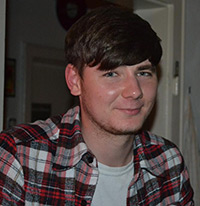
The Funcks Houseleek – a Germany-wide curiosity

There are large colonies of Houseleek (Sempervivum x funckii) on the rugged Diabase rocks around the castle ruins, Lady Chapel and castle tower.
Named after the pharmacist and botanist Heinrich Christian Funck (1771-1839) from Gefrees, he transplanted and nurtured these plants in 1830 to the then still-forested slopes around Berneck.
Presumably he interbred 3 Alpine Aroids (Arum genus), so as to obtain the Funcks Houseleek.
Such mass deposits of Sempervivum plants as seen in Berneck, are unique in Germany outside of the Alps.
In June, these thick leaved plants can be seen growing abundantly on bare stone and their pink sea of flowers is a delight to behold.
By the way, until 1905 the rare Apollo butterfly (Parnassius apollo) lived on these slopes.
Please look under photos for more Images.





